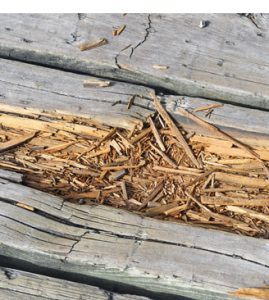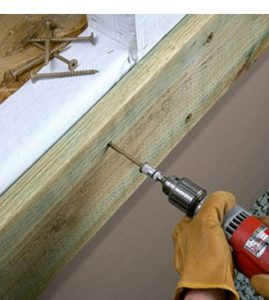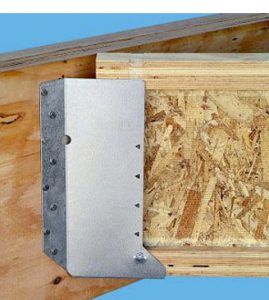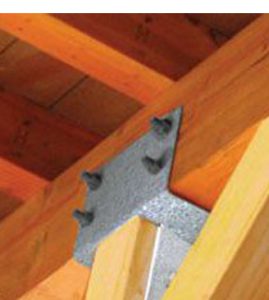A wooden deck is typically only safe for 10-15 years, but many Canadians are pushing the limits and delaying the replacement of their rotting, unsafe decks.
So how do you know if your deck is safe or an accident waiting to happen?
It’s important to evaluate your deck seasonally to make sure it’s still structurally sound. Look for warning signs like missing or loose connections, corrosion, rot and cracks. Regularly check for loose boards, protruding nails or screws, and areas where the wood appears to be softening. If you’re nervous about the safety of your deck, consult a design professional or qualified contractor.

A solid deck is built with proper structural connectors and fasteners because it has a big load to carry.
A deck is constantly dealing with pressure from three different forces: gravity (from people standing on it, or from piles of snow and ice), lateral motion (from people walking on it, or high winds), and uplift (from the upward pressure of people standing on the overhang).
Just like a house, a deck needs to be built with a “continuous load path.” This means the structure of the deck is supported by a series of solid connections that transfer the weight through the frame and down to the ground – as well as to your home, which acts as the adjacent support structure. A deck with a continuous load path is better able to resist the strong winds and storms that can weaken it.
Have you ever been at someone’s house for a BBQ and noticed there’s a slight gap where their deck meets the house? That’s actually one of the most common failure points on worn-out deck or a deck that was built poorly in the first place.

A solid deck has structural screws – not plain old nails – securing its ledger board to the house. It also has joists and beams connected with the proper hangers and ties, and stringers that are securely connected.

Just like deck boards, joists, and railings are exposed to the elements, so are the metal connectors and screws holding the deck together. Over time, they can corrode and weaken your deck – especially if you live near the water or in an area with lots of moisture in the air. It’s important to choose connectors designed for the environment where you live.

If you’ve inspected your deck and decided it’s no longer safe, talk to us about how you can repair the bad areas or start from scratch and build a new, strong deck. By choosing durable connectors designed specifically for decks and following our recommendations, you’ll be able to feel confident you’re hosting a backyard get-together on a deck that’s safe for everyone to enjoy.



